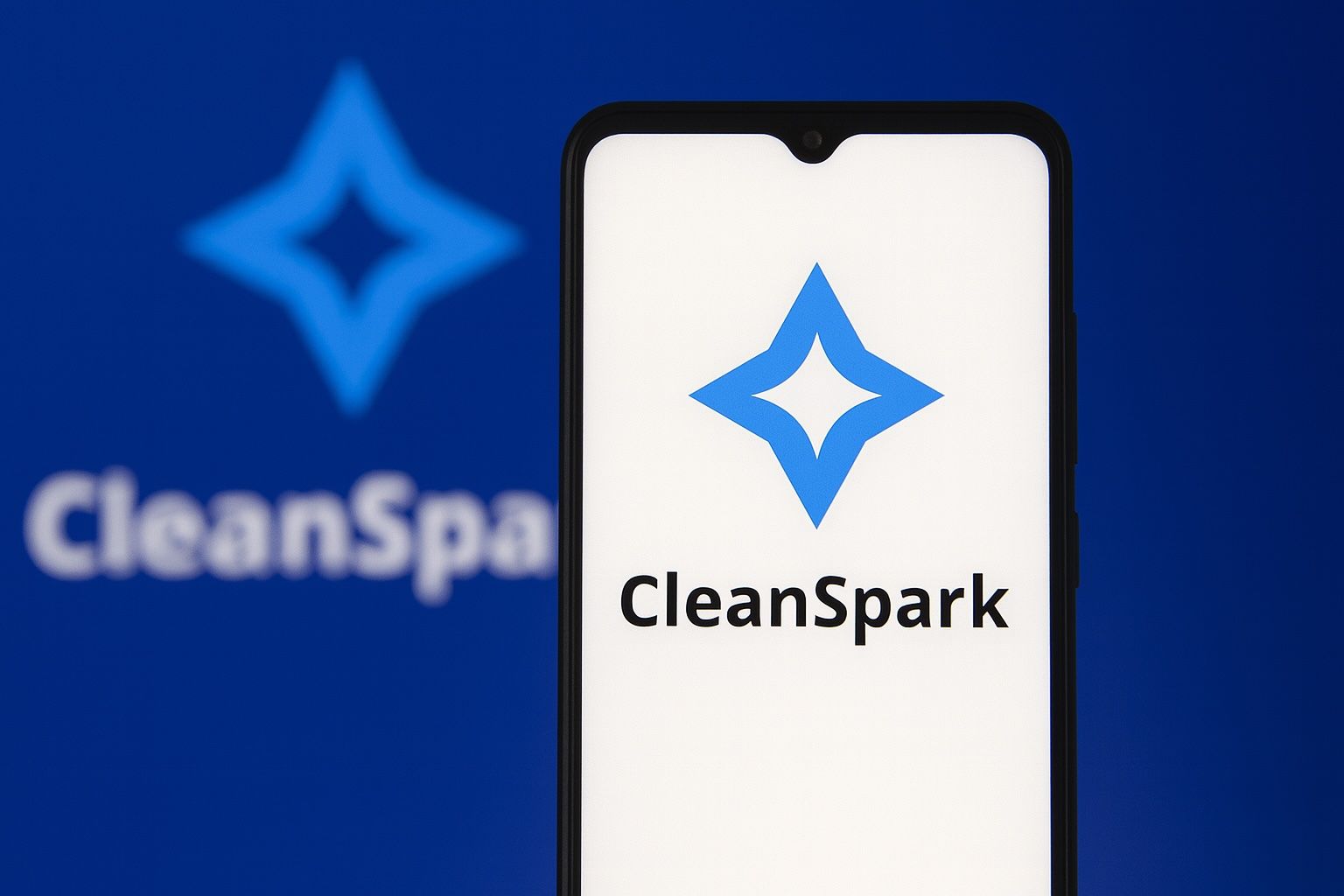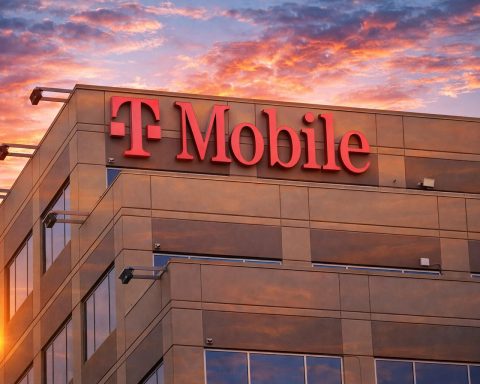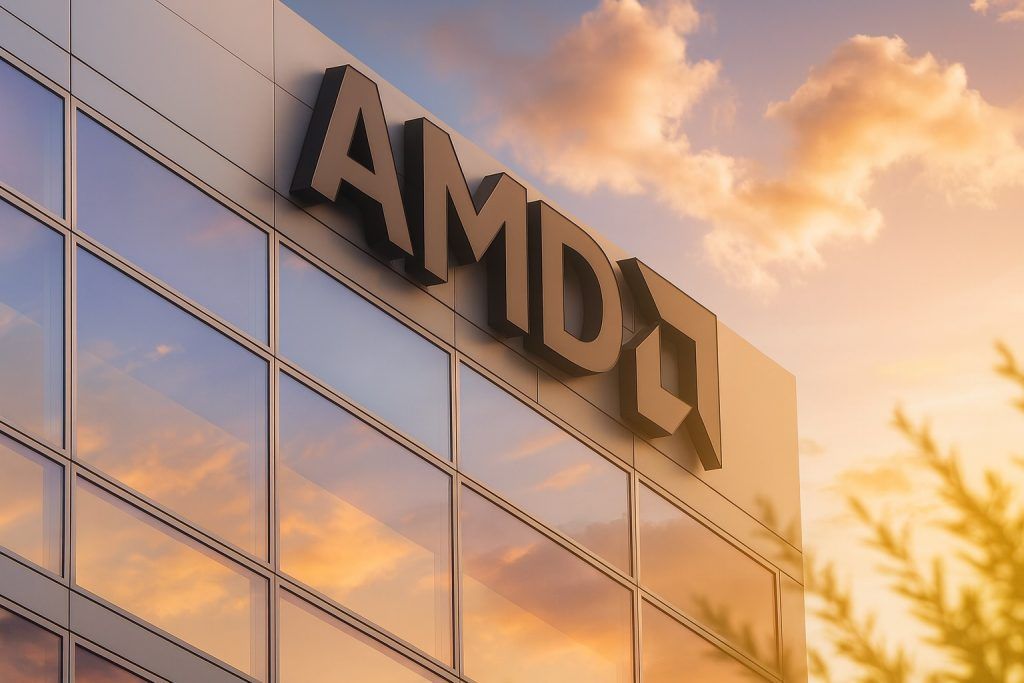- CleanSpark stock soars on AI expansion news: Shares of CleanSpark (NASDAQ: CLSK) jumped by double digits (up to ~13% intraday on Oct. 20) after the company unveiled plans to expand beyond Bitcoin mining into AI data centers [1]. Investors cheered the appointment of a veteran AI executive to lead this new division.
- Bitcoin boom fuels mining surge: Bitcoin’s price recently rebounded to all-time highs (around $110K–$120K in October) [2], lifting the entire crypto mining sector. CleanSpark’s stock has more than doubled in 2025 (over +100% year-to-date) [3], far outpacing the broader market, as record Bitcoin prices boost the value of its mining output and holdings.
- New AI pivot diversifies CleanSpark’s business: On Oct. 20, CleanSpark announced it will leverage its large-scale energy and data center assets to develop advanced AI and high-performance computing (HPC) centers [4]. The company hired Jeffrey Thomas, an industry veteran who led a multi-billion-dollar AI data center project in Saudi Arabia, as SVP of AI Data Centers to spearhead this expansion [5]. Management says this strategic evolution will diversify revenue beyond Bitcoin mining and strengthen long-term cash flows [6] [7].
- Current stock price and performance: After the recent rally, CLSK trades around the low-$20s per share – it closed ~$20 on Oct. 9 and hit a 52-week high of $23.61 by mid-October [8]. That marks a ~118% gain year-to-date from about $9 in January [9]. The stock is up ~102% in the past month alone [10], reflecting bullish momentum from both the Bitcoin uptick and CleanSpark’s growth moves.
- Analysts bullish with higher targets: Wall Street is largely optimistic on CleanSpark. 9 out of 10 analysts covering CLSK rate it a Buy/Outperform, and the average 1-year price target sits in the low-$20s (around $21–$22) [11]. Several firms recently raised their targets – for example, Needham upped its target from $21 to $23 (Buy) [12] and BTIG to $26 [13] – citing CleanSpark’s expanding infrastructure and strategic diversification. A few outliers urge caution (J.P. Morgan downgraded to Neutral with a $14 target, flagging valuation concerns [14]), but the consensus view sees further upside if execution stays on track.
- Strong balance sheet: $400M credit and 13,000+ BTC treasury: CleanSpark has financed its growth with non-dilutive capital, avoiding new share issuance. In late September it secured $200M in new bitcoin-backed credit lines (on top of $200M earlier in 2025) for a total $400M facility [15] [16]. This lets CleanSpark raise cash without selling its 13,000+ BTC treasury hoard, using the coins as collateral instead. Executives say this approach – “retaining bitcoin and using it as loan collateral” – is “at the core of CleanSpark’s capital strategy,” allowing aggressive expansion without diluting shareholders [17].
- Short-term outlook: momentum tempered by volatility: In the near term, CleanSpark’s stock is riding strong momentum. Technical indicators showed overbought conditions after the recent spike (the stock’s RSI hit ~85 in early October) [18], suggesting the rapid run-up could pause if Bitcoin’s rally cools. The Bitcoin market’s volatility remains the biggest swing factor for CLSK’s quarterly earnings. A pullback in BTC prices or mining profitability could trigger profit-taking in miner stocks [19]. Nonetheless, continued bullish sentiment around Bitcoin (e.g. the upcoming 2024 halving cycle) and progress on CleanSpark’s AI ventures could keep investor interest elevated in the coming months [20] [21].
- Long-term outlook: new growth vs. new competition: Longer-term, CleanSpark’s bold pivot toward AI infrastructure could redefine its business. If successful, the company could transform from a pure crypto miner into a broader “digital infrastructure provider” serving both blockchain and AI markets [22] [23]. This opens vast growth opportunities – the demand for AI computing power is surging – but also puts CleanSpark in direct competition with established cloud and data center players. Executing this strategy will require developing expertise in AI hardware, forging enterprise client relationships, and managing energy costs efficiently [24] [25]. In a bullish scenario, AI/HPC services could become a significant revenue stream (potentially eclipsing mining over time), giving CleanSpark a more stable, diversified income base. However, challenges include rapid tech obsolescence in AI chips, the need for skilled talent, and competition from both traditional data center giants and other miners making similar pivots [26] [27]. Investors will be watching how CleanSpark secures AI clients and contracts in the coming year as a barometer of its long-term diversification success [28].
- Energy use and regulation – an ESG edge?: Bitcoin mining is highly energy-intensive, and regulators globally are increasing scrutiny on its environmental impact [29]. In some regions, authorities have even considered or enacted bans on carbon-heavy crypto mining to meet climate goals [30]. CleanSpark has tried to differentiate itself by focusing on renewable energy and efficiency – it operates mining facilities in low-cost power regions and incorporates on-site solar and battery systems to offset grid usage [31]. This “green mining” approach not only lowers operating costs but bolsters CleanSpark’s ESG credentials. If future policies or incentives favor miners with cleaner energy profiles (for example, potential tax credits or easier permits for low-carbon operations), CleanSpark could stand to benefit [32]. In fact, industry trends show ESG compliance becoming a “fundamental requirement” for miners to attract institutional capital by 2025 [33]. CleanSpark’s integrated energy infrastructure may position it well to navigate tightening environmental regulations while expanding both its Bitcoin and AI data center businesses.
CleanSpark’s Stock Soars on AI Expansion News (October 2025)
CleanSpark grabbed headlines on October 20, 2025, after announcing a significant business expansion into AI computing. The Nevada-based company – known primarily as a Bitcoin miner – revealed it will start building and operating AI and high-performance computing data centers, effectively diversifying beyond pure crypto mining. This news sent CLSK stock sharply higher, with shares surging about 12–14% in intraday trading on Oct. 20 [34] [35]. It marks a continuation of bullish momentum for CleanSpark: the stock had already been climbing thanks to the broader crypto rally, and the AI pivot added fuel to the fire. By mid-day, CleanSpark was one of the top gainers on the NASDAQ, and it closed the day with roughly a 9% gain [36], near its highest price levels of the year.
The market’s enthusiastic reaction is tied to the implications of CleanSpark’s move. By leveraging its extensive energy infrastructure and data center expertise to serve the booming AI industry, CleanSpark aims to create new revenue streams insulated from Bitcoin’s volatility [37] [38]. “The expansion is designed to offer critical computing services to the burgeoning AI sector and establish diversified revenue independent of Bitcoin’s volatile price cycles,” CleanSpark CEO Matt Schultz noted, emphasizing it as a strategic leap to strengthen long-term cash flows [39]. The company has already secured additional power and real estate in Georgia – a key region for its new AI operations – indicating that on-the-ground development is underway [40].
Notably, CleanSpark hired Jeffrey Thomas as the new Senior Vice President of AI Data Centers to lead this initiative [41]. Thomas is an industry veteran with over 40 years of experience; he previously oversaw a multi-billion-dollar AI data center project in Saudi Arabia’s tech sector [42]. His appointment reassured investors that CleanSpark is serious about executing the AI strategy with seasoned leadership. “Jeffrey’s decades of experience building and scaling digital infrastructure platforms make him an exceptional addition,” CEO Schultz said, “as we deliver diversified growth for our shareholders” [43]. Thomas himself touted CleanSpark’s vision, stating the company is “at a pivotal moment… already a leader in bitcoin mining, and I look forward to expanding into next-generation digital infrastructure… positioning CleanSpark at the center of the AI and intelligent computing revolution.” [44].
The bold pivot by CleanSpark comes amid a broader trend of crypto miners embracing AI. Rival mining firms like Marathon Digital, Hut 8, Bitdeer, Iris Energy (IREN) and others have all announced moves to repurpose or expand their facilities for high-performance computing and AI hosting [45]. With vast power contracts, cooling systems, and technical know-how in running large data centers, miners see an opportunity to “join the AI rush”, as CoinDesk put it [46]. Investors have been rewarding these pivots – viewing them as miners unlocking hidden value in their infrastructure. “Markets are rapidly repricing companies shifting focus toward powering the next generation of compute,” CoinDesk noted of the trend [47]. CleanSpark’s 12% stock jump on its AI news is a case in point, reflecting overwhelmingly positive market reaction to its strategy shift [48]. In fact, since CleanSpark first hinted at expanding into HPC in September, the stock is up roughly 40% [49], showing how much optimism the AI angle has injected into its valuation.
Bitcoin’s Record Rally Boosts CleanSpark’s Fortunes
Another core driver behind CleanSpark’s surging stock has been the remarkable rally in Bitcoin prices throughout 2025. In recent weeks, Bitcoin broke above its previous all-time highs – trading north of $110,000 per coin in mid-October [50] and even briefly topping $120,000 [51]. This crypto market resurgence has greatly benefited miners like CleanSpark. Higher Bitcoin prices directly increase the profitability of mining (since the value of each mined BTC is greater) and swell the worth of any BTC the company holds on its balance sheet. CleanSpark, notably, has been holding a significant Bitcoin reserve – over 13,000 BTC in its treasury as of Sept 30, 2025 [52] [53] – rather than selling all mined coins. As Bitcoin hit record levels, CleanSpark’s trove became a goldmine: at $110K+ per BTC, their 13,000 Bitcoins alone represent roughly $1.4 billion in value. This dynamic helped push CleanSpark’s market capitalization above $5.5 billion [54] during October’s peak, as investors priced in the company’s asset windfall.
The stock’s recent performance has been stellar. CLSK has more than doubled in 2025, rising from about $9 in January to the low-$20s by October [55]. It reached a fresh 52-week high of $23.61 on Oct. 15, 2025 [56] after a string of positive news. By mid-October, shares were trading ~118% higher year-to-date [57] and over 100% higher than just one month prior [58]. Few stocks on the market have seen that kind of one-year return, and it vastly outpaced the S&P 500 or Nasdaq indexes during the same period. The crypto-mining sector broadly has been on fire: industry peers like Marathon Digital and Riot Platforms also saw big gains as Bitcoin’s price climbed, but CleanSpark has been one of the standout performers.
Several catalysts fueled CleanSpark’s rise besides just Bitcoin’s price. In late September, the company announced a pair of large credit facilities totaling $200 million each (with Coinbase Prime and lender Two Prime) – essentially loans collateralized by CleanSpark’s bitcoins [59]. This added $200M in new liquidity (on top of earlier credit lines) that CleanSpark can deploy for expansion without issuing new shares or dumping its BTC holdings [60]. The market viewed this very positively: access to $400 million in capital gives CleanSpark “ample dry powder for growth without diluting shareholders,” as the company noted [61]. In fact, when the $100M Coinbase credit line was announced on Sept. 22, CLSK stock jumped about 6% that day [62]. And after adding the second $100M loan on Sept. 25, shares kept climbing, reflecting investor approval of this “borrow against Bitcoin, don’t sell it” strategy. CleanSpark’s CFO, Gary Vecchiarelli, highlighted that they had “effectively utilized nearly 13,000 bitcoin” in treasury to fund expansion, stressing that this non-dilutive financing is key to “accelerate data center growth” while protecting shareholder value [63] [64].
The company’s operational achievements have also impressed the market. CleanSpark became the first publicly traded Bitcoin miner to reach 50 EH/s (exahashes per second) of processing power in mid-2025 [65] [66], making it one of the largest miners in North America by hashrate capacity. Its Bitcoin production has been hitting record levels – for example, September’s mining update showed over 630 BTC mined that month and a 26% improvement in fleet energy efficiency year-on-year [67] [68]. This scale and efficiency give CleanSpark leverage to capitalize on Bitcoin’s high prices. CEO Matt Schultz called September “monumental,” noting CleanSpark’s growth has put it in a position to “thrive at the intersection of energy, Bitcoin, and compute” [69]. In other words, CleanSpark sees itself not just as a miner, but as an infrastructure play straddling the crypto and energy industries – a positioning that the October AI pivot directly builds upon.
Experts Weigh In: Analyst Opinions and Price Targets
Wall Street analysts have largely applauded CleanSpark’s trajectory in 2025. The stock’s big run has prompted many research firms to update their models – generally raising price targets to account for the Bitcoin upswing and the company’s expansion plans. According to GuruFocus data, 9 out of 10 analysts covering CLSK maintained a “Buy” or equivalent positive rating as of early October [70]. The consensus 12-month price target across analysts was around $21.5 (low $20s) [71], which is roughly where the stock traded by late October. However, several bullish analysts see much more upside: for instance, Cantor Fitzgerald and H.C. Wainwright issued some of the Street’s highest targets in recent months, in the $25–$27 range [72] – implying ~50% potential upside from mid-$18 levels when those targets were set. More recently, BTIG analysts hiked their target to $26 after CleanSpark’s AI announcement, and Needham & Co. boosted theirs to $23 (from $21), citing the company’s substantial growth in infrastructure and successful diversification of revenue streams beyond Bitcoin [73].
This bullishness is underpinned by the belief that CleanSpark is executing well and positioned strongly if crypto markets remain favorable. “Analysts remain optimistic [on CleanSpark] despite insider selling news,” noted a TipRanks report in October, pointing to the fact that even as some company insiders took profits, professional analysts like Needham’s John Todaro reiterated their Buy ratings and raised targets [74]. The strategy of holding mined Bitcoin (instead of selling it) and using it as collateral to raise cash has drawn praise as an innovative way to fuel growth without hurting shareholders. “Retaining bitcoin and using it as loan collateral… is at the core of CleanSpark’s capital strategy,” CleanSpark’s CFO emphasized [75]. This approach essentially lets the company have its cake and eat it too – benefitting from Bitcoin’s price appreciation while still funding expansions like new machines and data centers. Analysts see this as a savvy strategy to maximize long-term value if Bitcoin’s bull market continues.
Not all experts are unequivocally positive. In late September, J.P. Morgan surprised some by downgrading CleanSpark from Overweight to Neutral, assigning a much lower $14 price target [76]. J.P. Morgan’s analyst Reginald Smith cautioned that, after the stock’s huge rally, valuation might be stretched relative to execution risks [77]. Essentially, the worry is that CleanSpark’s market cap (over $5 billion) already prices in a lot of future success, so any stumble – whether a dip in Bitcoin prices or delays in building out the AI centers – could cause a correction. This more cautious stance remains a minority view; no other major firm has a Sell on the stock (0 Sells, 1 Hold, 9 Buys in the latest tally) [78]. However, it underscores that risks do exist and that CleanSpark’s stock is not a one-way bet.
Financial commentators also note that competition and execution will be key. “For investors, CleanSpark’s niche can be a double-edged sword,” one analysis observed – on one hand it enjoys a diversified business model and smart use of debt, “on the other hand it faces all the cyclical risks of crypto plus the execution demands of energy projects.” [79] In other words, CleanSpark has to perform well in two complex industries at once: cryptocurrency mining and energy/compute infrastructure. Thus far it has managed this balance, but going forward the stakes will only grow as the company scales up.
Still, the prevailing sentiment is that CleanSpark’s management has navigated the market adeptly in 2025. By rapidly expanding hashrate, securing cheap power, embracing clean energy, and now pivoting to chase the AI opportunity, they have kept CleanSpark a step ahead. “Unlike pure-play miners Marathon or Riot, CleanSpark also sells energy projects,” noted Finimize, highlighting how the company’s roots in the microgrid business give it a unique angle versus competitors [80]. This integrated approach – mining Bitcoin while also developing energy solutions and potentially AI hosting – is something most peers haven’t replicated. The company’s leadership frames it as playing a longer game. As CEO Schultz put it, CleanSpark is prepared to “prosper at the intersection of Bitcoin, energy, operational excellence and capital stewardship” [81]. That mission statement appeals to investors who want exposure to crypto’s upside, but with a hedge of real assets and tangible infrastructure.
Short-Term Drivers and Risks
In the short term, CleanSpark’s stock will likely continue to be driven by Bitcoin price momentum and news on its expansion projects. With Bitcoin recently near record highs, sentiment remains bullish – and historically, mining stocks act as high-beta plays on Bitcoin, often rising (or falling) by a larger percentage. If Bitcoin stays in an uptrend or breaks even higher ground, CleanSpark stands to benefit disproportionately due to its leveraged exposure (both operationally and through its BTC holdings). The upcoming Bitcoin “halving” event in 2024 and the possibility of a spot Bitcoin ETF approval are examples of broader crypto catalysts that could keep tailwinds behind miners into early 2026.
However, the flip side is that any pullback in Bitcoin could impact CleanSpark’s stock quickly. Mining profits can shrink fast if BTC prices dip while energy costs remain fixed. CleanSpark does partially mitigate this by having efficient operations – its cost to mine each Bitcoin is lower than many peers thanks to economies of scale and renewables, which cushions margins [82]. But it is not immune; a sharp downturn in crypto markets would likely see CLSK decline in sympathy. Traders should note that after such a steep rally, volatility is elevated – CleanSpark’s share price has seen big swings on both positive and negative news. Indeed, technical analysts warn that the stock became overbought by early October (e.g. Relative Strength Index > 80) [83], so some consolidation or profit-taking would be normal. In recent trading days, volume spiked well above average (20+ million shares vs. ~10M typical) [84], indicating a lot of trading activity. Such bursts often coincide with short-term peaks as momentum players pile in. If Bitcoin were to stall around $110K, CleanSpark’s stock could see a healthy pullback or volatility after its euphoric run.
Another near-term focus is how quickly CleanSpark can show progress on its AI data centers. The company has announced plans and hires, but investors will be eager for concrete updates – for example, signing an anchor client for AI hosting, breaking ground on a new facility, or reporting initial revenue from HPC services. Any news demonstrating that the AI strategy is moving from concept to reality could provide a further catalyst for the stock, independent of Bitcoin. Conversely, if months pass with little detail, the market’s patience could wane, especially since some level of AI success may already be “priced in” after the recent jump. In summary, the short-term outlook for CLSK remains positive but fragile: it’s bolstered by crypto-market strength and excitement over AI, yet vulnerable to the inherent swings of those very sectors.
Long-Term Prospects and Sector Context
Looking further out, CleanSpark’s evolution raises bigger questions: can a Bitcoin miner successfully turn into a hybrid crypto-and-AI infrastructure provider? If the answer is yes, the payoff could be substantial. The global demand for AI computation is exploding – powering everything from advanced cloud AI services to training large language models – and big tech companies are hungry for data center capacity. This gives CleanSpark an avenue for growth beyond the finite world of Bitcoin mining. In a bull case scenario, five years from now CleanSpark might derive a significant portion of its revenue from leasing out compute power, hosting AI workloads, or providing cloud-like services, while still maintaining a strong Bitcoin mining arm. This would make it a more resilient business across different market cycles [85] [86]. Investors could then value CleanSpark more like a tech infrastructure stock (which often get higher earnings multiples) rather than purely a volatile mining stock.
However, challenges abound on the long-term horizon. Firstly, moving into AI services pits CleanSpark against heavyweights and entrenched competitors. Companies like Amazon (AWS), Google Cloud, Microsoft Azure, and specialty players like CoreWeave (a major AI cloud provider that itself evolved from crypto mining) are all investing tens of billions into AI data centers. CleanSpark will need to find a competitive edge – perhaps focusing on certain niches or leveraging its low-cost energy infrastructure – to win business in this crowded field [87] [88]. The company’s leadership acknowledges this will require new capabilities, from specialized hardware (GPUs, AI chips) to software and support services tailored for AI clients [89]. It’s a very different customer base than Bitcoin mining, meaning CleanSpark must cultivate relationships with enterprise clients or research institutions who need HPC capacity. Successfully doing so is far from guaranteed and will likely take time.
The broader industry context also suggests this hybrid model is where many miners are headed. CleanSpark is part of an emerging trend of crypto miners rebranding as “digital infrastructure” or “tech” companies rather than pure miners [90] [91]. For example, Riot Blockchain literally renamed itself Riot Platforms to reflect diversification, and others like Applied Digital shifted focus to next-gen data centers for machine learning tasks [92]. This indicates that by 2025, the line between a crypto mining farm and a generic data center is blurring. Many miners are realizing their expertise in managing power-hungry computing facilities can be repurposed to chase more stable, growing markets like cloud computing and AI [93] [94]. This industry-wide pivot could create a more resilient crypto infrastructure sector in the long run [95] – one that’s not solely at the mercy of crypto boom-bust cycles. CleanSpark is at the forefront of this paradigm shift, which could be transformative if executed well [96] [97].
Nonetheless, with more miners jumping into the AI hosting space, competition may heat up and erode potential margins. CleanSpark’s peers such as Core Scientific, Hut 8, TeraWulf, Iris Energy and others are all exploring similar moves [98]. This means the race is on to secure clients and scale up capacity; those who move fastest and build a reputation for reliability will have an advantage. If the niche gets crowded, pricing for AI compute services might become competitive, which could pressure profits relative to expectations. Additionally, CleanSpark must keep one foot firmly in the crypto world. Bitcoin mining itself isn’t going away – indeed, the next Bitcoin halving in 2024 will cut block rewards in half, potentially driving prices higher if demand holds. CleanSpark’s large BTC holdings and mining fleet position it to benefit from that, but also to suffer if a post-halving slump occurs (as has happened in some past cycles). Managing these dual tracks – a volatile but potentially lucrative crypto operation and a nascent AI data center venture – will define CleanSpark’s long-term story. It’s an ambitious balancing act that few, if any, companies have attempted at this scale.
Energy Usage and Clean Energy Regulations: A Critical Consideration
One factor that cannot be ignored in CleanSpark’s outlook is energy – both as a cost factor and a regulatory target. Bitcoin mining is infamous for its heavy electricity consumption, and as the industry expands, environmental concerns have grown. Policymakers in various jurisdictions have floated measures to rein in crypto mining’s carbon footprint. For instance, some European countries have considered or implemented bans on energy-intensive mining to conserve power [99], and in the U.S. there have been discussions of extra taxes on electricity for miners (though not enacted at the federal level as of 2025). Globally, by 2025 ESG (environmental, social, governance) compliance became almost a prerequisite for miners seeking institutional investment [100]. In practice, this means mining companies are under pressure to use renewable energy sources, improve efficiency, and report their emissions. We see many miners touting their use of hydro, wind, solar, or excess natural gas that would otherwise be flared [101] [102] – anything to show they are minimizing reliance on coal or heavy carbon sources.
CleanSpark has proactively built a “clean energy” image – it’s right in the name. The company originated in the energy technology sector, providing microgrid solutions, before pivoting to crypto mining. As a result, CleanSpark still operates an energy segment and has incorporated renewables into its mining operations. It has deployed on-site solar panels and battery storage at some facilities, partnered with utilities for low-carbon power, and generally sited its data centers in regions with low-cost, cleaner electricity (such as Georgia and Texas which have abundant natural gas, nuclear, and renewables in the mix) [103]. This not only lowers costs per Bitcoin mined (a competitive advantage) but also positions CleanSpark as one of the more sustainable players in an industry often criticized for carbon impact [104].
If future regulations favor miners with greener footprints, CleanSpark could reap benefits. For example, there is speculation that governments might introduce carbon credits, efficiency standards, or other rules that essentially reward miners who use renewable energy and penalize those who don’t. CleanSpark’s CEO in prior communications has emphasized their focus on ESG, implying the company is ready for such an environment. “If regulatory changes favor onshore, ESG-friendly miners (clean energy usage), CleanSpark could attract additional institutional demand,” one analysis noted [105]. In other words, the company’s access to big investors and capital markets could grow if it’s seen as a responsible, sustainable miner versus a polluting one. Moreover, as CleanSpark expands into AI data centers, energy efficiency will remain crucial. Large AI computing facilities can consume as much or more power than crypto mines. This might draw similar scrutiny from environmental regulators who are concerned about data centers’ energy use [106]. CleanSpark’s experience in optimizing power usage and integrating renewables could thus become a selling point not just for goodwill, but for winning business – certain enterprise customers or government contracts might prefer AI service providers with a green energy profile.
All told, energy is both a risk and an opportunity area for CleanSpark. A risk, because rising electricity prices or strict carbon regulations could increase operating costs or limit expansion (mining is very sensitive to power costs). But an opportunity, because CleanSpark’s focus on vertical integration and clean power could set it apart. The company’s “infrastructure-first” model – controlling land, power, and data centers – gives it control over how that infrastructure is powered [107]. As we head into a future where climate concerns are only intensifying, CleanSpark’s strategy of monetizing “low-cost, high-reliability energy by producing a critical resource – compute” may prove prescient [108]. They are essentially turning energy into money in two ways: by mining Bitcoin and by providing computation, all while trying to keep that energy usage as efficient and green as possible. This could put CleanSpark in the good graces of regulators and large investors who are increasingly looking for sustainable crypto practices.
Conclusion: A Miner Transformed, but Execution is Key
CleanSpark’s journey in 2025 encapsulates a broader narrative in the crypto sector: the reinvention of Bitcoin miners for a new era. The company has ridden the wave of Bitcoin’s resurgence to new stock highs, aggressively scaled its mining operations, and crucially, made a splashy entrance into the world of AI infrastructure. These moves have been met with excitement – evident in the stock’s sharp rally and bullish analyst coverage – because they suggest CleanSpark is not content with being just a mining company tied to Bitcoin’s fate. Instead, it aspires to be a diversified digital asset and computing powerhouse, straddling two of the most transformative technologies of our time: cryptocurrency and artificial intelligence.
There are good reasons to be optimistic. CleanSpark has shown it can execute ambitious growth plans (hitting record hashrates, acquiring facilities, raising capital) while maintaining financial discipline by leveraging debt smartly instead of diluting shareholders [109] [110]. Its management appears forward-looking, identifying trends like HPC diversification early. If Bitcoin’s bull market persists into 2026 and CleanSpark makes tangible progress on its AI data centers, the company could enjoy the best of both worlds – strong cash flows from mining plus a foothold in a high-growth tech sector. That scenario would likely see CLSK stock continue to outperform, perhaps with valuations more akin to a tech infrastructure firm than a traditional miner.
Yet, investors should keep a grounded view. CleanSpark’s success remains intertwined with Bitcoin’s fortunes; a severe crypto downturn would hurt its financial performance regardless of other projects. Building an AI data center business from scratch will not happen overnight, and execution risk is significant. The company must spend large sums (from that $400M credit facility and future earnings) to build out new facilities and acquire cutting-edge hardware – all while ensuring it can find clients to fill that capacity in a highly competitive market. Any missteps, delays, or failure to achieve expected returns on these investments could temper the market’s enthusiasm. Additionally, external factors like energy price inflation or new regulations on crypto mining could introduce headwinds that even a pivot to AI won’t fully escape.
In summary, CleanSpark, Inc. stands at a fascinating crossroads in late 2025. It has been a clear winner of the recent crypto market uptrend, and now it’s boldly pushing into uncharted territory to secure its future in the AI era [111] [112]. The next few quarters will be critical in demonstrating whether this pivot can deliver sustained results. Short-term, eyes will be on Bitcoin’s price and initial AI venture milestones – drivers that could keep the stock volatile but upward leaning. Long-term, the company’s ability to transition into a hybrid model will determine if CleanSpark can truly transcend the label of “Bitcoin miner” and achieve a more durable, innovative legacy. For now, it’s “a new dawn for crypto infrastructure,” and CleanSpark is attempting to lead the charge [113]. Investors and industry watchers alike will be closely monitoring this “pivotal moment” in CleanSpark’s journey [114], as it could well signal how the crypto mining sector itself evolves in the years ahead.
Sources: CleanSpark press releases and investor updates; CoinDesk and Bloomberg reporting on CleanSpark’s AI expansion [115] [116]; Market analyses from TS2, Chronicle Journal, and GuruFocus [117] [118] [119]; Analyst insights via TipRanks and GuruFocus [120] [121]; Finimize and industry reports on mining trends [122] [123]; Company statements on strategy and energy use [124] [125].
References
1. news.bloomberglaw.com, 2. ts2.tech, 3. ts2.tech, 4. www.coindesk.com, 5. www.coindesk.com, 6. www.prnewswire.com, 7. www.prnewswire.com, 8. markets.chroniclejournal.com, 9. ts2.tech, 10. markets.chroniclejournal.com, 11. ts2.tech, 12. ts2.tech, 13. markets.chroniclejournal.com, 14. ts2.tech, 15. ts2.tech, 16. ts2.tech, 17. ts2.tech, 18. ts2.tech, 19. ts2.tech, 20. markets.chroniclejournal.com, 21. markets.chroniclejournal.com, 22. markets.chroniclejournal.com, 23. markets.chroniclejournal.com, 24. markets.chroniclejournal.com, 25. markets.chroniclejournal.com, 26. markets.chroniclejournal.com, 27. markets.chroniclejournal.com, 28. markets.chroniclejournal.com, 29. markets.chroniclejournal.com, 30. www.chainup.com, 31. ts2.tech, 32. ts2.tech, 33. www.chainup.com, 34. news.bloomberglaw.com, 35. markets.chroniclejournal.com, 36. www.gurufocus.com, 37. markets.chroniclejournal.com, 38. markets.chroniclejournal.com, 39. markets.chroniclejournal.com, 40. markets.chroniclejournal.com, 41. www.coindesk.com, 42. www.coindesk.com, 43. www.prnewswire.com, 44. www.prnewswire.com, 45. markets.chroniclejournal.com, 46. www.coindesk.com, 47. www.coindesk.com, 48. markets.chroniclejournal.com, 49. markets.chroniclejournal.com, 50. markets.chroniclejournal.com, 51. ts2.tech, 52. ts2.tech, 53. ts2.tech, 54. ts2.tech, 55. ts2.tech, 56. markets.chroniclejournal.com, 57. ts2.tech, 58. markets.chroniclejournal.com, 59. ts2.tech, 60. ts2.tech, 61. ts2.tech, 62. ts2.tech, 63. ts2.tech, 64. ts2.tech, 65. ts2.tech, 66. ts2.tech, 67. ts2.tech, 68. ts2.tech, 69. ts2.tech, 70. ts2.tech, 71. ts2.tech, 72. ts2.tech, 73. markets.chroniclejournal.com, 74. ts2.tech, 75. ts2.tech, 76. ts2.tech, 77. ts2.tech, 78. ts2.tech, 79. ts2.tech, 80. ts2.tech, 81. www.prnewswire.com, 82. ts2.tech, 83. ts2.tech, 84. ts2.tech, 85. markets.chroniclejournal.com, 86. markets.chroniclejournal.com, 87. markets.chroniclejournal.com, 88. markets.chroniclejournal.com, 89. markets.chroniclejournal.com, 90. www.chainup.com, 91. www.chainup.com, 92. www.chainup.com, 93. www.chainup.com, 94. www.chainup.com, 95. markets.chroniclejournal.com, 96. markets.chroniclejournal.com, 97. markets.chroniclejournal.com, 98. markets.chroniclejournal.com, 99. www.chainup.com, 100. www.chainup.com, 101. www.chainup.com, 102. www.chainup.com, 103. ts2.tech, 104. ts2.tech, 105. ts2.tech, 106. markets.chroniclejournal.com, 107. www.prnewswire.com, 108. www.prnewswire.com, 109. ts2.tech, 110. ts2.tech, 111. markets.chroniclejournal.com, 112. markets.chroniclejournal.com, 113. markets.chroniclejournal.com, 114. www.prnewswire.com, 115. www.coindesk.com, 116. news.bloomberglaw.com, 117. ts2.tech, 118. markets.chroniclejournal.com, 119. www.gurufocus.com, 120. ts2.tech, 121. markets.chroniclejournal.com, 122. ts2.tech, 123. www.chainup.com, 124. ts2.tech, 125. www.prnewswire.com







